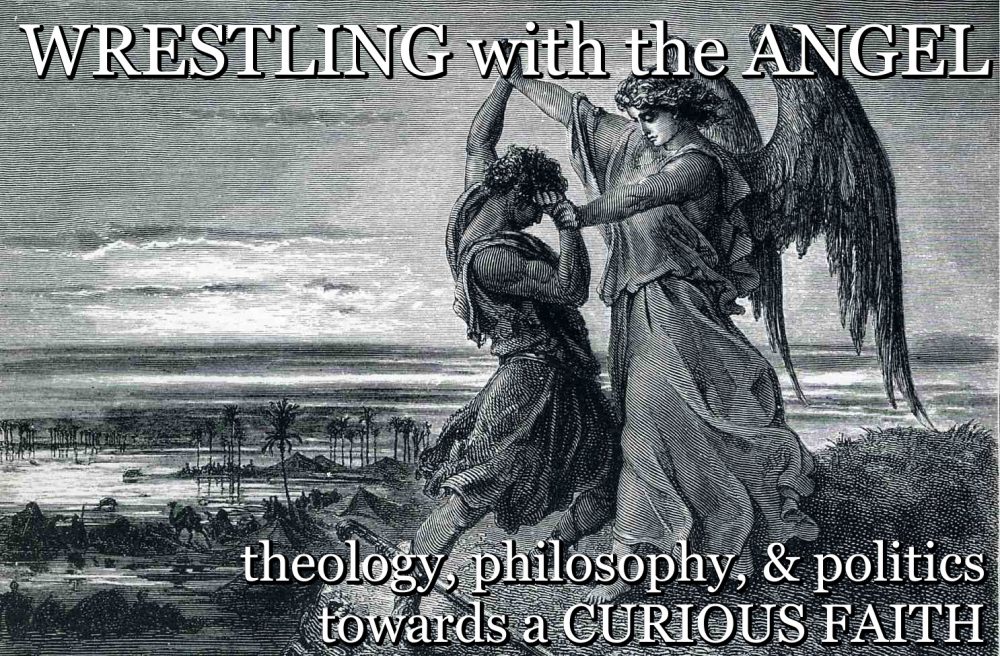 Relevant Magazine’s most recent issue has a short article by James Dwyer on Holy Trinity Brompton, a parish in the Church of England which the piece celebrates for its innovative engagement with contemporary culture. At a time, Dwyer stresses, that the CoE’s membership is collapsing, Holy Trinity Brompton (“HTB”)is showing massive growth, not only of its principle parish, but also of additional “centres” (what I think would traditionally be called parish missions) around London. Dwyer chalks this success up to Brompton’s vicar, Nicky Gumbel, who critiques the “classical music” model of traditional Anglicanism and advocates for liturgy, formation, and fellowship modeled instead on contemporary culture.
Relevant Magazine’s most recent issue has a short article by James Dwyer on Holy Trinity Brompton, a parish in the Church of England which the piece celebrates for its innovative engagement with contemporary culture. At a time, Dwyer stresses, that the CoE’s membership is collapsing, Holy Trinity Brompton (“HTB”)is showing massive growth, not only of its principle parish, but also of additional “centres” (what I think would traditionally be called parish missions) around London. Dwyer chalks this success up to Brompton’s vicar, Nicky Gumbel, who critiques the “classical music” model of traditional Anglicanism and advocates for liturgy, formation, and fellowship modeled instead on contemporary culture.
Now, on the face of it, I don’t see anything necessarily wrong with this. The idea that the kerygma must be translated, as it were, into new cultural forms is as old as the Church itself; Paul struggled to faithfully convey the radical perspective of this new Jewish sect to his Gentile converts. But, as with most things in life, the devil is in the details. What are we talking about when we talk about “culture”, anyway? It’s such a broad term, and it can cover things as seemingly innocuous as contemporary slang and fashion, to weightier issues like consumerism. Which elements of culture, exactly, is Rev. Gumbel interested in being “in sync” with–and are there any elements of contemporary culture he is not willing to compromise with? These are really the essential questions, but, disappointingly, Dwyer does not press them.
And there are deeper questions still, questions which do not even come up over the horizon of this article. Fundamentally, what do we think the Church is really about, anyway? The driving assumption of this piece is, as far as I can see, that the goal of the Church is simply to get more members, more butts in pews, higher Average Sunday Attendance. HTB is celebrated by Dwyer because it succeeds at getting people to come into church on a regular basis in a country where Christianity is in major decline. That seems to be the only criterion for success here. More traditional parishes are dismissed because their membership is falling, while Gumbel’s work is presented as self-evidently wonderful because he built it, and people are coming.
Now, doubtlessly, the Church can achieve nothing if it has no members; indeed, the Church just is the community of its members. So there really can’t be any disagreement that for the Church as a whole and for specific denominations and congregations to be around in the first place, they have to find ways to gain and retain membership. But we have to be aware of “mission creep”–having our means slowly come to be seen as our ends. Gaining and maintaining members is only worthwhile if those members–all of us–actually take Christian discipleship seriously. Simply going to Church and describing oneself as a Christian is the first, not the last, step of our faith. The question is whether our parishes are inviting and challenging people with the full force of the Gospel.
Now, again, the Gospel is not tied to any particular kind of music, or architecture, or type of vestments. Innovation and change in these matters has been the norm, not the exception. That said, we must not ignore issues on which the Church and our culture more broadly are in real conflict. To the extent that Gumbel is suggesting more or less superficial changes to our liturgy or our PR, I don’t see anything particular objectionable about this. But my guess is that being “in sync” with contemporary culture ultimately involves more than this. Note, for example, that Christian formation shifts, in his “Alpha” educational program, to “down-to-earth conversations about Jesus and faith, not just theology”. It’s not clear exactly what this means (and I am not familiar with these educational materials), but this sounds like an attempt to sideline perhaps serious questions of faith and commitment in order to make the Gospel more digestible–less challenging, less radical, less imposing. As I have suggested before, I think this is the opposite of what we should be doing. The Church should be challenging central elements of our culture, like hyper-individualism and the logic of capitalism. Are we likely to do this if our primary concern is being “in sync” with the culture (it must, of course, be admitted that more traditional-looking and -acting parishes do no better on this score–but this only deepens, rather than mitigating, the problem!)
Central to my concern here is the point that our means and our ends are not easily decoupled. We tend to think in a disconnected way about our methods and our goals, but in fact, frequently, certain goals just can’t be achieved by certain methods. If we begin by insisting that contemporary society requires a certain set of means or methods before we lock down exactly what our goals are, we are liable to lose track of what it is we thought we were up to, and move into a habit of focusing on just continuing our methods, as if the indefinite extension of those methods was our goal all along.
Indeed, at times, the logic of our methods is actually not just less-than-ideal to achieving our goals, but is rather totally counter to them. And all the hand-wringing about declining membership, I think, shows this with extreme clarity. If, at its core, the Church is about announcing both the bad news that human society is horribly disfigured by sin and the Good News that God has acted, and is acting, decisively to heal that disfiguration, then we should be suspicious of methods of growing the Church that demand that the Church shape itself around contemporary culture, itself part of the larger world disfigured by sin. In other words: the Church was inaugurated to challenge much of human culture. When we become more focused on how to model ourselves on the culture around us rather than challenging it, we lose our focus on the actual goal of the Body of Christ.
This, as I said above, is most decidedly not a new problem. We see it witnessed to in Scripture, in the earliest theological texts of the sub-Apostolic era (e.g. Justin Martyr and Irenaeus), all the way up through the medieval and modern periods as well. Richard H. Niebuhr’s Christ and Culture is often pointed to as a seminal text in studying these matters, but he was simply providing an updated look at the issue, not inaugurating a new field of study.
And it must be admitted that much of what more traditionalist Christians are defending against cultural innovation is just older cultural innovation. The music we find “traditional” today was new a few centuries ago; the early Church had no pipe organs or sheet music. The habit of kneeling to pray is only common in the western Church, and became so only in the medieval period (previously, standing was the norm, with occasional acts of full prostration generally reserved for particular kinds of prayer, especially penitential acts). The vestments common in the western Church were borrowed, more or less, from the Roman Senate. So Gumbel and others would be completely correct in saying that we should be ready to change much of this. I would certainly agree.
But we have to be on guard against allowing the logic behind making those sorts of changes replicating and expanding itself into our thinking about other matters. That’s not to say that more fundamental changes in liturgy or theology should never be made; such a position is simply a fetishization (one might even say idolization) of the past. But changes to our core beliefs must never be made simply to get more butts in the pews. Once we are willing to change core principles simply to try and keep the Church alive, we know that it’s definitely about to die.
For example, over the last 50 years many Christians–myself included–have embraced the ordination of women and the welcoming of LGBTQ Christians with full equality in the Church. But if I thought the only reason for doing so was to keep the Church up to contemporary cultural attitudes and membership up, I would be deeply worried. Instead, I would argue that Christians with “progressive” attitudes on these issues are actually just the very Christians who are most willing to be challenged by the Holy Spirit and the radical witness of Scripture. Sexism and heteronormativity, in other words, were actually cultural constructs which the Church adopted precisely in order to be accepted by the culture around it (the argument for this claim would obviously take up much more space than I have here; lots of work, historical, textual, and theological, has been done on this. A good place to start might be to read, say, Galatians and then either of the Epistles to Timothy –probably written much later–and note the tension between them).
That is to say: much of both our traditions and our innovations are actually just hypostatized ideas about our means rather than our goals. We absolutely should be wiling to discard “traditions” that are at tension with the radical message of the Gospel–but we must be just as wary of innovations that are in the same tension. The truth of the matter is that the Christian faith has no business being popular. We worship a God whose Word became incarnate in a man who was tortured and killed by the state, whose friends abandoned him after spending years completely misunderstanding his message. Apart from a few poor people, he was not popular during his lifetime, and the Church took the better part of a century to grow to about 10,000 members. We preach a stumbling block, a millstone around the neck. Our Lord calls us to sell everything, give the money to the poor, and take up a Cross–a torture-device. When we baptize our children, we wash them in the death of Jesus. We announce that our only hope comes through the mystery of death.
 None of this is calculated to be popular or easy to accept. So any church that is growing at a phenomenal rate is likely doing so precisely because it is refusing to really be honest about what Jesus taught and teaches, what kind of life Christian discipleship really is. Instead of focusing on getting more butts in the pews, we should be worried about whether we ourselves are really living as faithful witnesses of our radical, incredible, and, let’s admit it, scary faith. We are promised not a pie in the sky, but division, and fire, and strife–because our social, economic, political, and cultural structures feed on exploitation, misery, ignorance, and hatred. Our goal is to fight these structures, to do the work God has called us to in the abandoned vineyard–and yes, to welcome more workers into the vineyard. But that’s just it–we should only rejoice if someone has really committed to that work. If our churches are full of people who say “Lord, Lord”, but do not keep Jesus’s commandments, who do not feed the hungry and visit prisoners and challenge the Ruler of this world, then what have we done, exactly?
None of this is calculated to be popular or easy to accept. So any church that is growing at a phenomenal rate is likely doing so precisely because it is refusing to really be honest about what Jesus taught and teaches, what kind of life Christian discipleship really is. Instead of focusing on getting more butts in the pews, we should be worried about whether we ourselves are really living as faithful witnesses of our radical, incredible, and, let’s admit it, scary faith. We are promised not a pie in the sky, but division, and fire, and strife–because our social, economic, political, and cultural structures feed on exploitation, misery, ignorance, and hatred. Our goal is to fight these structures, to do the work God has called us to in the abandoned vineyard–and yes, to welcome more workers into the vineyard. But that’s just it–we should only rejoice if someone has really committed to that work. If our churches are full of people who say “Lord, Lord”, but do not keep Jesus’s commandments, who do not feed the hungry and visit prisoners and challenge the Ruler of this world, then what have we done, exactly?
Indeed, we should be asking ourselves how many people already in church–very much including ourselves and this writer–are actually living the Gospel. Perhaps we should spend less time worrying about getting more people into the church, and more time worrying about whether the Church really is doing the work its Head calls it to do. And indeed, if we actually lived, publicly and privately, the way Christ calls us to, I imagine that people really interested in a deep life of commitment–and not just feel-good spirituality–would take notice. Before we evangelize, let’s make sure we know what the Good News we are trying to spread actually is.
All of this is to say, not that everything that HTB is doing is somehow wrong (all I know about this particular parish I have gleaned from the rather slim article introduced at the beginning of this post), but rather that I think that those eager to celebrate this approach to ministry are asking the wrong questions, worried more about our social media presence than about whether the Church is really living the radicalness of the Gospel. I fear that so much of the innovation many contemporary ministers are interested in is really just like decorating a funeral home with bright balloons and playing up-beat music in the entryway. We are welcoming people to a corpse, but spending all of our time on the welcome, instead of trying to resuscitate the body.
